This article has been reviewed according to Science X's editorial process and policies. Editors have highlighted the following attributes while ensuring the content's credibility:
fact-checked
reputable news agency
proofread
The flickering glow of summer's fireflies: too important to lose, too small to notice them gone
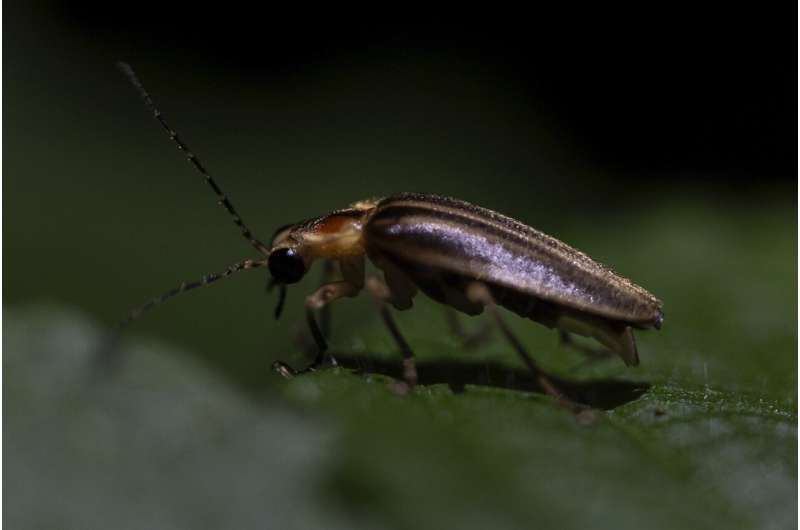
On a muggy July evening, Delaware state biologist Jason Davis is doing what kids have done for ages: Trying to catch a firefly. It's nowhere near as easy as the summer evenings of his own childhood, with only a few in this large wetland between a bay and the Atlantic Ocean.
Davis sees the double flash of a male and chases after it. It zags west. Davis follows. It zigs back east. Davis says the bug seems to be toying with him: "I think they're having fun." Finally, he flicks a long net to snare what some people call a lightning bug.
"That was four years of high school lacrosse," he says.
The firefly that Davis chased, the Bethany Beach firefly, is so rare that it's likely to become the first of America's fireflies to be put on the Endangered Species List later this year, experts said. It's in trouble due to rising seas from climate change, and rising housing developments. Davis and others estimate no more than 1,000 are left.
For many Americans, the flash of the firefly calls up memories of summer childhood evenings gone by—and now, the worry that the bugs are disappearing.
Fireflies once seemed plentiful and cool, easy to catch and watch, serving as an introduction to the world of nature around us. In the past few years, entomologists kept hearing anecdotal reports of fewer fireflies, leading to fears that the summer flash was fading with habitat loss, pesticides, light pollution and climate change.
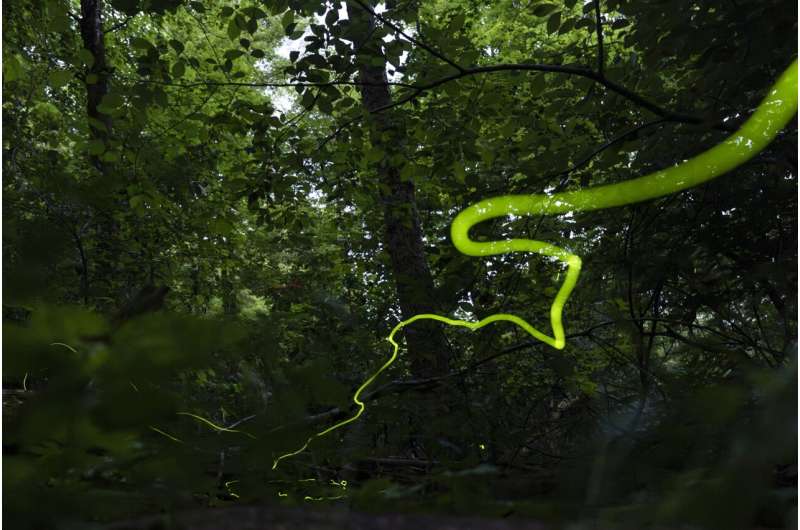
But they had no data. And the most common firefly, nicknamed the Big Dipper because of its swooping flight path, is thriving. The fireflies of many eastern and midwestern U.S. childhoods "have survived everything we can throw at them," said Tufts University biologist and firefly expert Sara Lewis.
But other species are troubled, and the Bethany Beach type isn't the only one at risk of blinking out for good.
"They're too important for us to lose, but they're too small for us to notice," said Sergio Henriques, invertebrate conservation coordinator at the Indianapolis Zoo. He's been on his own hunt for a particular species of ghost firefly that hasn't been seen for 35 years.
Every U.S. state but Hawaii has fireflies. Different species come out at different times of night and summer. They flash or glow in their own ways. Urban areas with bright lights and not enough proper habitat can make them hard to find, but scientists have created a map of where to look, said Candace Fallon, a conservation biologist at the Xerces Society for Invertebrate Conservation.
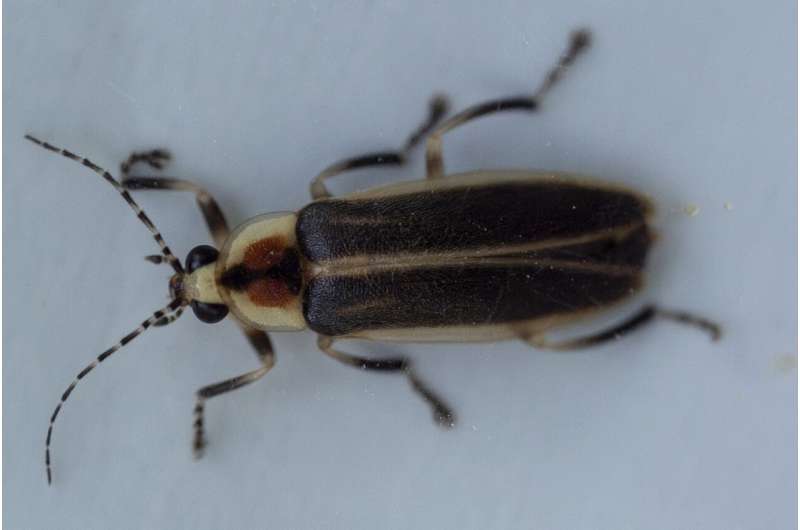
A couple years ago scientists finally took stock of America's 170 documented species of fireflies. Or tried to. They concentrated on trying to determine the the health of 130 species and of those "we discovered that about 50% of them, we don't know enough about them to even make a guess. They could be doing really well. They could be extinct, for all we know," Lewis said.
"It's kind of like we've taken fireflies for granted for many decades," said Delaware State University environmental sciences professor Christopher Heckscher, who rediscovered the Bethany Beach firefly in 1998 after it had been lost for 30 years. "Everybody just assumes that we know all about them and that we know all the species and that everybody loves them. You know, they're bioluminescent, so that's really cool. Kids love them. But it's amazing how little we know about them."
About one-third of the 130 species surveyed in the U.S. and Canada are doing fine, but about 18 are in trouble, Fallon said.

Fireflies flash or glow to warn other creatures that they are too toxic to eat, and they also light up seeking sex, scientists said. The males flash their pick-up lines and the females answer back, with each species having a special flash and color pattern and time they fly that helps to identify them.
The common Big Dipper are rather large for fireflies and give off a yellowish light.
"They fly along and they dip down as they start to flash and then rise up, kind of like skywriting the letter J," Lewis said. They come out before it gets dark and seem impervious to light pollution, making them the darlings of children.
But the light pollution does disrupt courtship, she said, by quashing the males' likelihood of flashing. And that can lower reproduction.
In Indiana, Henriques keeps an eye out for ghost fireflies, which do their signature thing differently than Big Dippers. There are different species of ghost fireflies, including the blue ghost, which despite its name glows green.
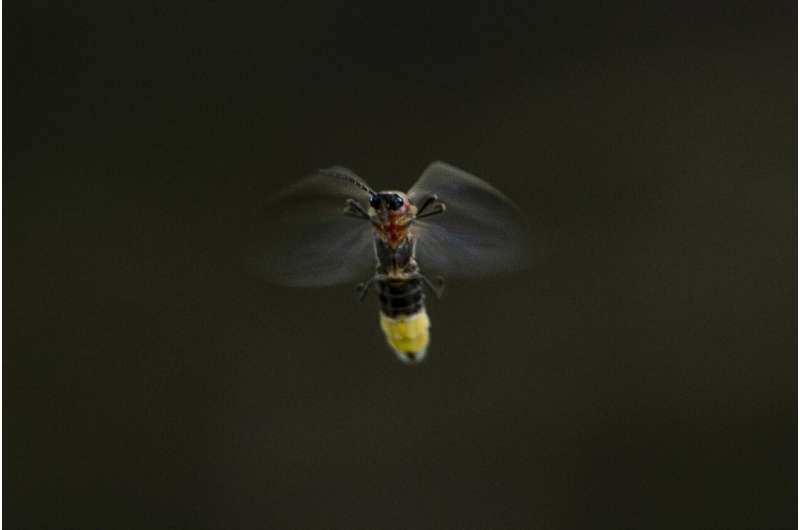
Ghost fireflies move like an apparition. "You're out in the darkness. There's nothing around you and all of a sudden you see this long, very slow moving trail of light that is green and along the floor," Henriques said. "It is so eerie that horses have been scared by it. People have stopped and looked and felt they were aliens or UFOs."
The Smoky Mountains have Photinus carolinus fireflies that have become a tourist attraction with their tendency to flash in unison.
Some fireflies—nicknamed femme fatale—mimic another species' light pattern to attract males, kill and eat them, Lewis said.
Climate change is another worry for fireflies, Lewis said. In Europe and elsewhere, fireflies that often need wetlands are being harmed by long droughts, she said.
Davis thinks climate change's rising seas will eventually wipe out the Bethany Beach firefly's habitat. But he and others think the firefly will be pushed out even sooner by people building homes in the few places the bugs can live.
-
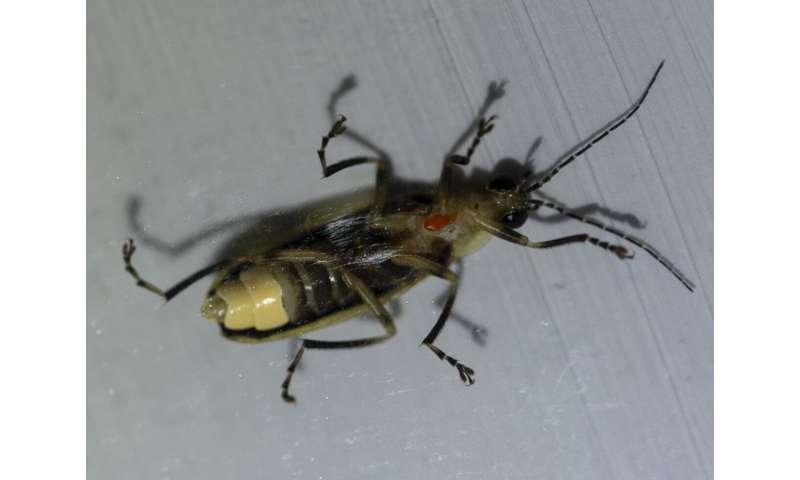
A red mite attached to the underside of a male Photuris versicolor firefly is observed in a specimen bag at Cedar Bog Nature Preserve on Friday, July 5, 2024, in Urbana, Ohio. This firefly was released back into its habitat. Credit: AP Photo/Carolyn Kaster -

Sergio Henriques, Invertebrates Conservation Coordinator at the Global Center for Species Survival at the Indianapolis Zoo, uses a net to look for fireflies on a swampy trail at the Beanblossom Bottoms Nature Preserve in Ellettsville, Ind., Friday, June 28, 2024. Credit: AP Photo/Carolyn Kaster -
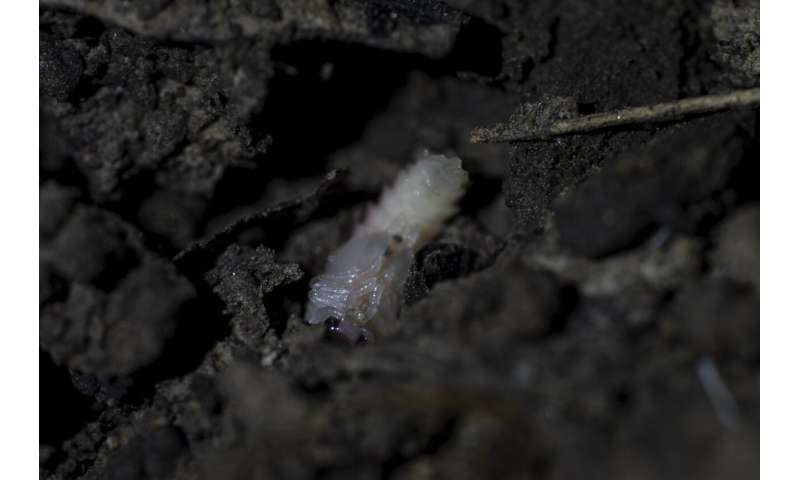
A firefly pupae is visible on top of moist soil on Friday, June 21, 2024, near Cincinnati. Credit: AP Photo/Carolyn Kaster -
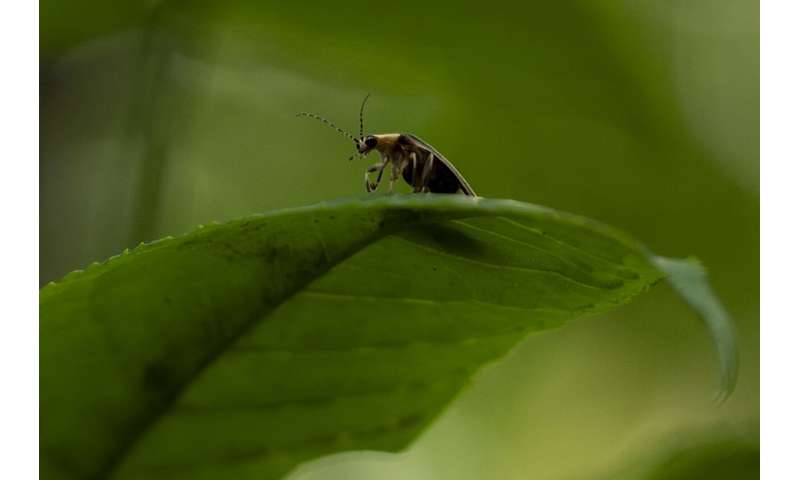
A firefly is visible on a leaf at Cedar Bog Nature Preserve just before sunset, Friday, July 5, 2024, in Urbana, Ohio. Credit: AP Photo/Carolyn Kaster -

Firefly researcher and guide Matthew Speights looks through the book "Fireflies, Glow-worms, and Lightning Bugs" by Lynn Frierson Faust as he looks for fireflies at Cedar Bog Nature Preserve, Friday, July 5, 2024, in Urbana, Ohio. Credit: AP Photo/Carolyn Kaster -
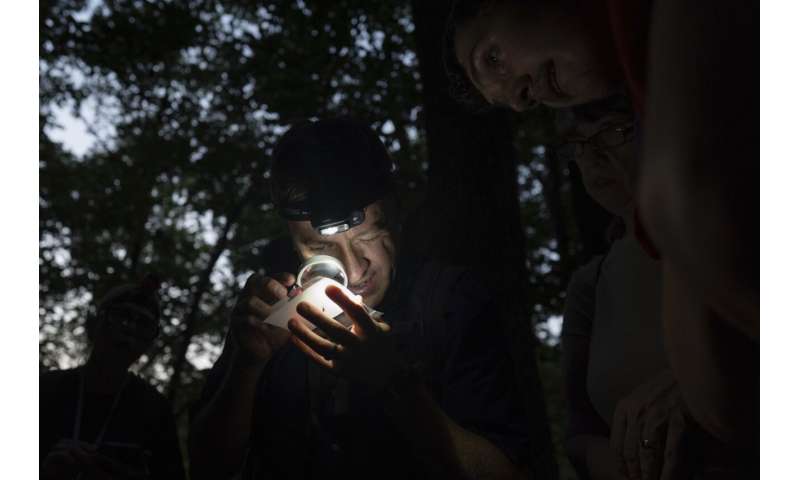
Firefly researcher and guide Matthew Speights looks through a magnifier at a firefly in a specimen bag on Friday, June 21, 2024, near Cincinnati. The firefly was released back into its habitat. Credit: AP Photo/Carolyn Kaster -
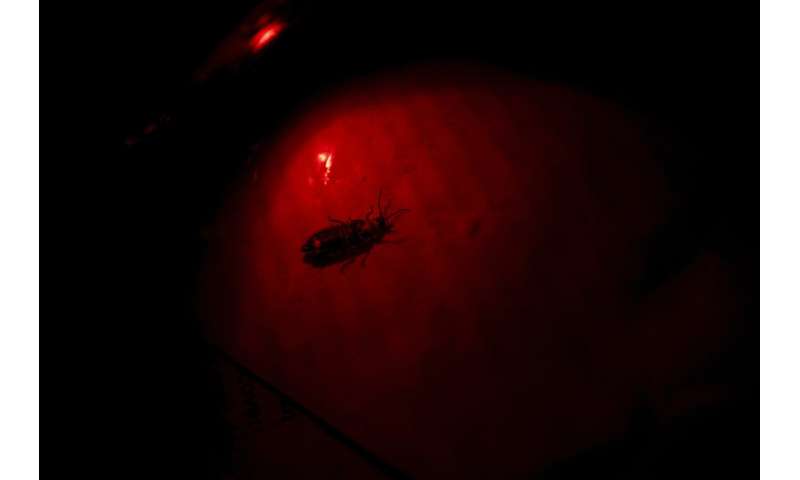
Sergio Henriques, Invertebrates Conservation Coordinator at the Global Center for Species Survival at the Indianapolis Zoo, examines a female firefly of the Photinus genus with a red light at the Beanblossom Bottoms Nature Preserve in Ellettsville, Ind., Friday, June 28, 2024. Credit: AP Photo/Carolyn Kaster -
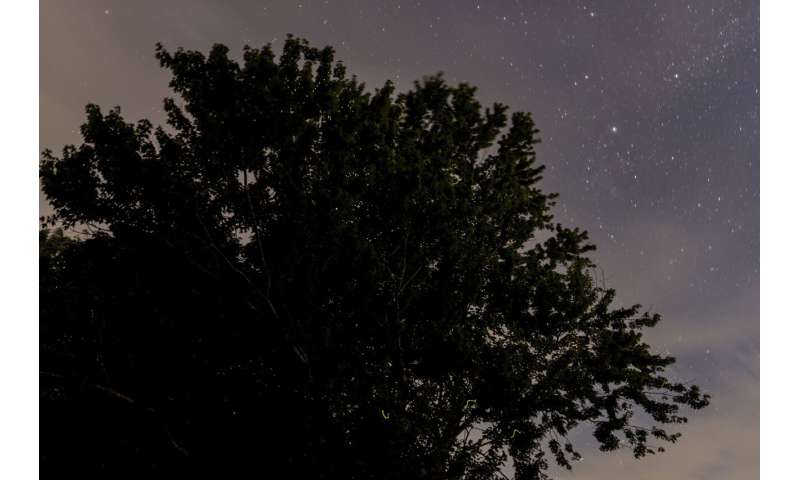
Various species of fireflies flash high in a tree on a starry night at Tremper Mound in Rosemount, Ohio, on Monday, July 8, 2024. Credit: AP Photo/Carolyn Kaster -
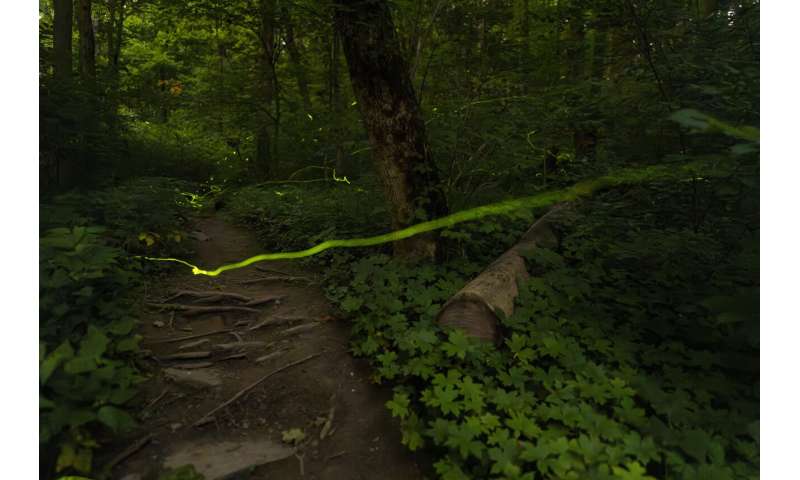
A long, slow-moving trail of light created by a Blue Ghost firefly is visible late Saturday, June 22, 2024, near Cincinnati. Fireflies produce a chemical reaction inside their bodies, allowing them to light up. This type of light production is called bioluminescence. Credit: AP Photo/Carolyn Kaster
Fireflies are special, Lewis said.
"Everybody loves them. Even people who hate insects. They don't even realize that fireflies are insects. I think they're like little fairies," Lewis said. "They are the absolute best ambassadors for natural magic."
© 2024 The Associated Press. All rights reserved. This material may not be published, broadcast, rewritten or redistributed without permission.


















